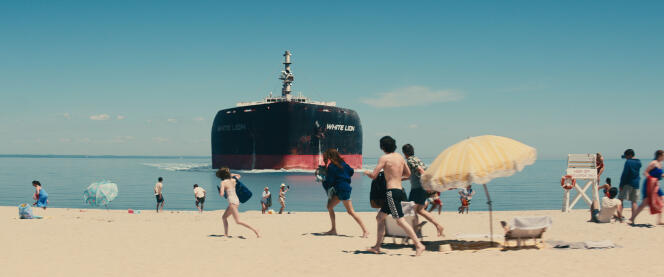


For this end-of-year column, I had planned to talk about exciting programs, but I have to confess something: I suffer from what you might call "chronic cathodic narcolepsy." To put it plainly, after starting a show or tuning into a channel, I generally fall asleep after barely 10 minutes. It's true that lying down and being covered by a cosy blanket doesn't help to maintain a focused attention. As in John Carpenter's film They Live (1988), where billboards broadcast subliminal messages to the oppressed masses ("obey the authorities," "consume," "drop your imagination"), the screen seems to be whispering a persuasive "sleep" in my ear.
So, in spite of myself, I'm a consumer of story starters, a cinephile of opening scenes, a subscriber to unsolved investigations. My mind is filled with a catalogue of truncated works that have nonetheless sown seeds of ideas in my foggy brain. If I were to attempt an end-of-year assessment based on these fragments of blurred programs, I'd say that what emerges from all this is first and foremost a protean anxiety about imminent disaster. The other day, for example, I started watching The World After Us (2023), a feature film by Sam Esmail (the director of the Mr. Robot TV series), starring Julia Roberts and Ethan Hawke.
Before falling asleep, I managed to follow this couple and their children on holiday in a luxury rental house by the sea. Then, as they sit on a beach, the family suddenly witnesses the sinking of a huge cargo ship just inches from their parasol. In the evening, another couple, the ones who rented them the house, made a sudden and disturbing intrusion into the building. Half asleep, I thought I heard something like "there's no more Wi-Fi." In short, I could hear the echoes of a catastrophe in progress, the outline of which I couldn't quite grasp, except that it was linked to the failure of our means of communication, a feeling of anguish intensified by the shrillness of the violins.
A few months earlier, I had started watching Noah Baumbach's White Noise, starring Adam Driver and Greta Gerwig, the story of a family trying to escape a chemical cloud by getting into their station wagon. "I want to know how scared I should be," said the youngest child, as the whole family hits the road. A twilight atmosphere, stormy purple skies, then sleep again.
Yet the opening scene alone, in which a university professor praises car accidents in American films, was enough to extract an interesting idea from this entertainment: the psychic addiction to disaster, its methodical aestheticization, until it passes from our screens into our lives, without arousing revolt, in an almost natural continuum. "Those who stage these collisions portray a kind of lightness, a carefree pleasure (...) There's a wonderful spirit in all this, full of innocence and joy," said the professor, all smiles, as a car explodes at the bottom of a ravine.
You have 30% of this article left to read. The rest is for subscribers only.
